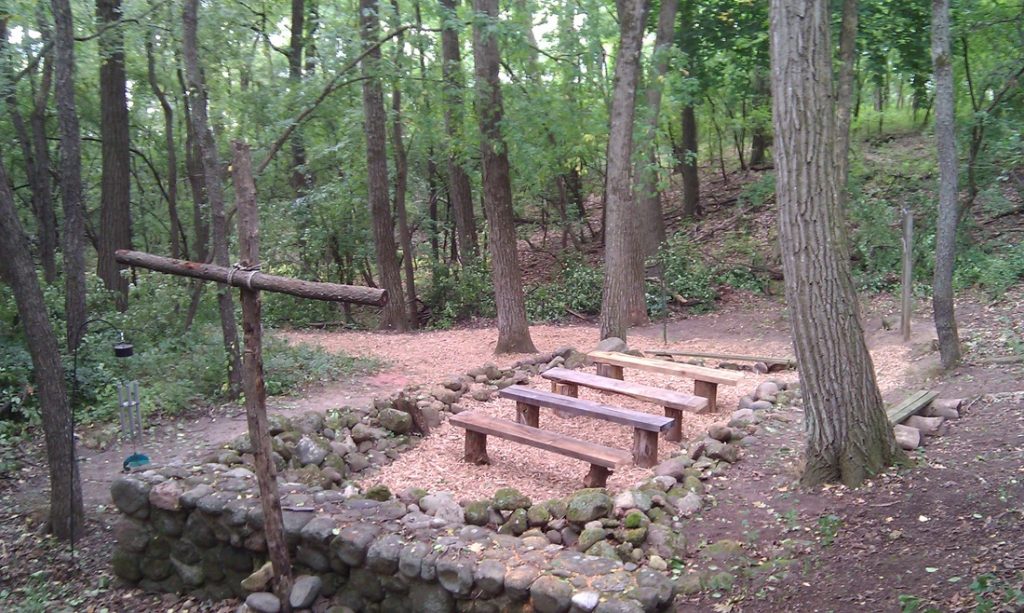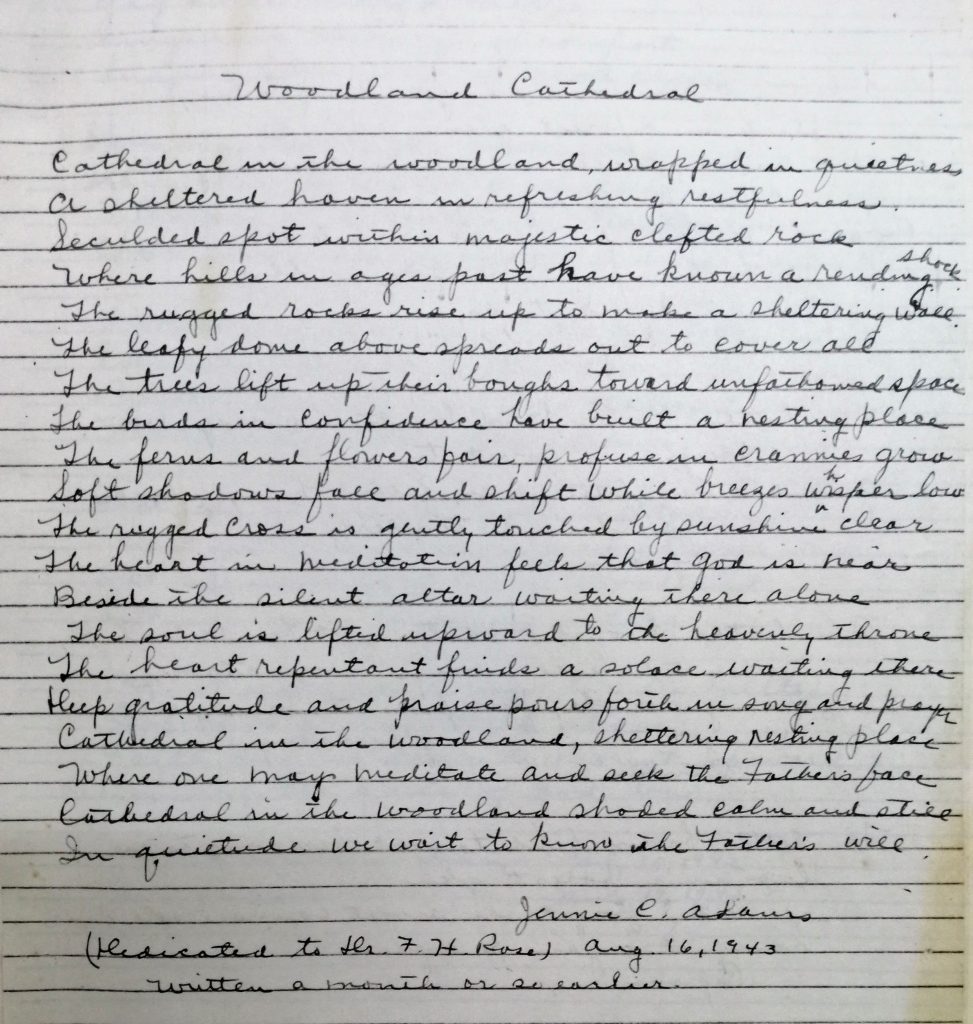By Francis Neil G. Jalando-on
A replica of the Cathedral in the Glen in Greenlake Conference Center in Wisconsin.
Situated in Central Philippine University, between the Henry Luce III Library and the Rose Memorial Auditorium, is the Hopevale Memorial. There stands a creative rendition of the Cathedral in the Glen, an open-air church designed and built by Dr. Francis Howard Rose in Tapaz, Capiz. A similar replica of the Cathedral in the Glen can be found in Green Lake Conference Center of the American Baptists Churches in Greenlake, Wisconsin.
Can you picture the Cathedral in the Glen or the Hopevale Memorial in your mind? What does it look like?
Four months before the 11 American Baptist missionaries were martyred because of their Christian faith in Tapaz, Capiz on August 16, 1943, Jeannie Claire Adams, a missionary nurse assigned in Capiz Emmanuel Hospital, described the Cathedral in the Glen through a poem she dedicated to Dr. Francis Howard Rose entitled “Woodland Cathedral.”
The original poem entitled Woodland Cathedral handrwritten by Jennie Claire Adams in 1943.
Here is the poem:
“Cathedral in the woodland wrapped in quietness
A sheltered haven in refreshing restfulness
Secluded spot within majestic clefted rock
Where hills in ages past have known a rending shock
The rugged rocks rise up to make a sheltering wall
The leafy dome above spreads out to cover all
The trees lift up their boughs toward unfathomed space
The birds in confidence have built a nesting place
The ferns and flowers fair profuse in erannies grow
Soft shadows fall and shift while breezes whisper low
The rugged cross is gently touched by sunshine clear
The heart in meditation feels that God is near
Beside the silent altar waiting there alone
The soul is lifted upward to the heavenly throne
The heart repentant finds a solace waiting there
Deep gratitude and praise pours forth in song and prayer
Cathedral in the woodland, sheltering resting place
Where one may meditate and seek the Father’s face
Cathedral in the woodland shaded calm and still
In quietude we wait to know the Father’s will.”
Louise Reid Spencer also described the Cathedral in the Glen in her book Guerrilla Wife. She and her husband, Cyril L. Spencer, a mining engineer, took refuge with the American Baptist missionaries in Hopevale. Unlike the 11 martyrs, they were able to escape and were subsequently rescued by the Allied Forces.
Here is what Louise Reid Spencer wrote in her book:
“The HOPEVALE CATHEDRAL was a gem of outdoor architecture… Dr. Rose built the cathedral himself every stone of it. It was open to the sky, and, in its contours, formed by nature herself. The gulley where we had first taken refuge was transformed, by the loving labor of Dr. Rose, into a vision of beauty and inspiration. Descending from the caingin down the slope to the level clearing between the two walls of rock. One entered the cathedral back the altar and walked the length of the church to be seated. Here, at the back, was a stone bench where about six people could sit. Straight up the center of the church from that bench ran the aisle, a stone walk wide enough for two persons to go abreast. It led to a small rectangular block of stone, where each Sunday Clifford built a fire. A few feet beyond this firebox there were three stone steps leading up to the stone altar. About three feet before the altar, one on each side, were two oval stone reading desks. Standing straight on the center of the altar was a rugged wooden cross.
At each side of the church was a stone bench where twelve people can sit. There were [sic] a hard-packed dirt terrace bordered with stone which ran in front of all three benches, the small one at the back and the two at the sides. This terrace spread out in a fan shape at the front of the church, and the organ could be placed on either side. The organ lofts were planted with wild forest bloom, so that the organist sat in a living bower of color. At the base of the altar and the reading desks Dr. Rose had also planted shrubs.
The floral decorations for the top of the altar were arranged each Sunday by Mrs. Covell, who had studied the art of flower arrangement when she lived in Japan. It seemed ironic to me that while we hid from our brutal enemy, one of his ancient arts contributed to the decoration of our House of God.
Dr. Rose had spent months on this cathedral, his only tools his hands, a small shovel, and a chisel. He had created something so beautiful that we caught our breath when we came to it. But he was never finished with the work of building it. He added and perfected its details constantly. The maintenance alone was quite care [sic], for there were always fallen leaves to be brushed away, and rocks and stones that crashed down from the precipitous walls on either side to be cleared and their damage repaired.
I went often to cathedral and sat there quietly for a while, watching the trees above wave gently in the breeze, watching the small, agile monkeys, high up, swinging in the vines that twined among the trees. It seemed an entirely different place the gulley we had come to as a hide-out on the 18th of April 1942. The transformation was complete. It truly seemed the house of God, and from it we drew confidence and faith.”
On December 17-20, 2018, the Convention of Philippine Baptist Churches will spearhead the Hopevale Diamond Commemoration to be held in Central Philippine University, Filamer Christian University and in Hopevale, Tapaz, Capiz.
If you wish to attend, you will surely see the area where the Cathedral in the Glen was constructed in Hopevale, and also the replica in Central Philippine University.


